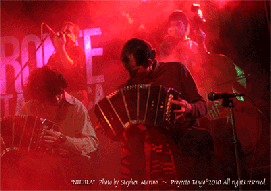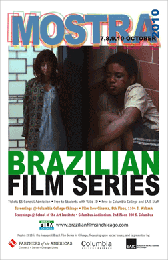For example, we hear recorded music while we purchase our groceries, while we are shopping at a mall, and even while we are on hold, waiting for a human voice on the telephone. We cannot block this onslaught of sound ¯ it accompanies us virtually everywhere.
Consequently, we have learned to "tune out" this music so that we can think about the purpose of our mission at the moment. The ability to tune music out has made it difficult for us to know how to listen to various components of music ¯ its melody, texture, form, and even its rhythm. However, this difficulty can be overcome with significant listening practice, more accurate understanding of musical terminology, and heavy dose of patience.
One of the problems that may impede an understanding of the intricacies of tango rhythm is inaccurate use of musical terms. Mutual understanding of the required vocabulary can be difficult, if not impossible. Also, the difficulty of understanding tango rhythm can be compounded by many factors, depending on a dancer’s experience and teacher’s expertise. As you read through this article, please see Helpful Vocabulary below.
There are three types of traditional Argentine Tango music, each possessing its own distinctive rhythm. I will speak about the rhythms of these three types of tango ¯ the tango, the vals, and the milonga.
The tango has the most variation in tempo interpretation of these three dances/songs, and it is often the most difficult for a beginning dancer to understand.
First, tango can begin with a rhapsodic or free style introductory section, followed by the remainder of the selection which continues with a regular rhythm. During the introductory section, the dancer usually performs freestyle adornments, or simply waits for the main section of the dance to begin.
This rhapsodic introduction is not exclusive to tango; the same musical structure (tension/release) seems to satisfy musical taste in many parts of the world, in folk traditions, and in classical versions such as that of Europe, India, Central Java and Bali in Indonesia, and, of course, in Argentina.
Rebecca Schwan is a tanguera and holds a B.A. from Dominican University and an M.M.
from Northern Illinois University, where she’s currently pursuing an Ed.D. She teaches
World/Culture courses in the classroom and on-line at DePaul University and Saint
Xavier University.
Her interest in culture and communication and English as a Second Language teaching
experience have led Ms. Schwan to develop the LanguageLab, an in-house language enhancement
program, for a multi-national IT corporation. She functions as the lab’s organizer,
individual language tutor and editor.
At Naperville, Illinois’ DePaul University campus and in the corporate world, her
interests are in developing curricula and serving as a learning facilitator in situations
that promote reverence for life, pluralism, and life-long learning.
AS WE INAUGURATE
TANGO LIFE & NEWS
TAKE ADVANTAGE OF OUR EXCLUSIVE
ONE-TIME OFFER TO PLACE YOUR AD HERE
FREE DURING NOVEMBER!
ADVERTISERS, DON’T MISS THIS CHANCE TO FEATURE
YOUR BUSINESS IN PREMIUM WEB SPACE
THAT WILL BE SEEN BY A GLOBAL AUDIENCE!
EMAIL OR CALL NOW
FOR DETAILS.
312.287.8406
AS A SPECIAL INTRODUCTORY BONUS, YOU’LL ALSO RECEIVE A DISCOUNT ON ADS PLACED THROUGH
JANUARY 6, 2011.






